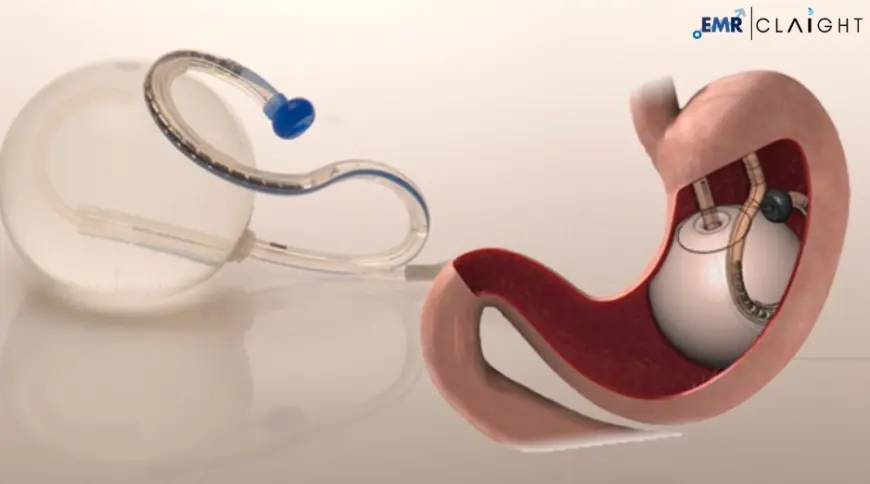Europe Balloon Catheters Market Size, Share, Trends, Growth, Key Insights, Key Players, & Report | 2024 - 2032
The global balloon catheters market is expected to grow significantly from USD 4.5 billion in 2023 to an estimated USD 8.1 billion by 2032, at a CAGR of 6.5% during the forecast period.

The europe balloon catheters market is expected to grow significantly from USD 4.5 billion in 2023 to an estimated USD 8.1 billion by 2032, at a CAGR of 6.5% during the forecast period. Balloon catheters are widely used in various medical procedures, primarily for treating cardiovascular diseases such as coronary artery disease, which is increasingly prevalent worldwide. These devices are instrumental in minimally invasive surgeries, offering enhanced patient recovery, reduced hospital stay, and lower surgical risks.
In this article, we will explore the growth drivers, market trends, opportunities, key players, and other essential aspects of the balloon catheters market. We will also provide a detailed overview of the market’s dynamics and offer answers to some of the frequently asked questions (FAQs) in this domain.
What are Balloon Catheters?
Balloon catheters are medical devices used in procedures such as angioplasty and vascular interventions, primarily in the treatment of coronary artery disease. These catheters have an inflatable balloon at their tip, which can be inflated to open up narrowed or blocked blood vessels. They are inserted through a small incision in the skin and are guided through the blood vessels to the target area. The balloon is inflated, compressing the plaque or clot against the arterial walls, thereby restoring normal blood flow.
Get a Free Sample Report with Table of Contents : https://www.expertmarketresearch.com/reports/europe-balloon-catheters-market/requestsample
Key Features of Balloon Catheters:
- Inflatable balloon: Used to dilate the vessel, helping to remove blockages.
- Small diameter: Enables insertion through small incisions, leading to minimally invasive procedures.
- Guide wire compatibility: Balloon catheters can be used with guide wires for precise positioning.
Key Drivers of the Balloon Catheters Market Growth
1. Rising Prevalence of Cardiovascular Diseases (CVDs)
Cardiovascular diseases, including coronary artery diseases, heart attacks, and strokes, are the leading causes of death globally. The increasing prevalence of CVDs is one of the primary factors driving the demand for balloon catheters. As populations age and lifestyle factors such as high cholesterol, hypertension, and lack of exercise become more prevalent, the incidence of cardiovascular problems has risen significantly. Balloon catheters are essential in treating these diseases through angioplasty and stent placement, fueling market demand.
2. Technological Advancements in Balloon Catheter Devices
The development of advanced balloon catheters, such as drug-coated balloons and bioresorbable balloons, is enhancing the effectiveness of treatments. Drug-coated balloons (DCBs) release medication directly at the site of treatment, helping to prevent restenosis (re-narrowing of the artery). Moreover, innovations in catheter design, including improved flexibility, durability, and enhanced guide wire compatibility, are improving the safety and outcomes of procedures.
3. Minimally Invasive Procedures
There has been a significant shift towards minimally invasive procedures due to the reduced recovery time and lower risk of complications. Balloon catheter procedures, which are less invasive than traditional open-heart surgeries, allow for faster recovery times and shorter hospital stays. As a result, more patients opt for balloon catheter-based interventions, which is boosting market growth.
4. Increasing Healthcare Expenditure
With increasing healthcare expenditure, especially in developed regions like Europe and North America, there is a growing adoption of advanced medical technologies, including balloon catheters. Hospitals and clinics are investing in better diagnostic and therapeutic devices, creating more opportunities for balloon catheter market growth.
5. Rising Geriatric Population
The aging population is another crucial factor contributing to the market's expansion. Older adults are more prone to cardiovascular diseases, leading to higher demand for balloon catheter interventions. In developed nations, where the elderly population is increasing, healthcare systems are focusing more on cardiovascular disease management, further driving the demand for balloon catheters.
Market Trends and Opportunities
1. Drug-Coated Balloon Catheters
The advent of drug-coated balloon catheters is one of the most significant trends in the market. These devices have a coating of drugs that help prevent the artery from narrowing again after the procedure. This technology is especially useful in patients with restenosis (re-narrowing of arteries), making it a promising area for future growth in the balloon catheter market.
2. Rise of Emerging Markets
While developed regions like Europe and North America dominate the balloon catheters market, emerging markets in Asia Pacific and Latin America are witnessing rapid growth. The improving healthcare infrastructure, increasing disposable income, and rising awareness about cardiovascular diseases in these regions present substantial opportunities for manufacturers and healthcare providers.
3. Adoption of Artificial Intelligence (AI) and Robotics
The integration of artificial intelligence (AI) and robotic systems into balloon catheter-based procedures is an emerging trend. AI is being used to assist in real-time imaging and navigation, helping doctors make more accurate decisions during surgery. Robotic systems enable more precise catheter placement, improving patient outcomes and minimizing risks.
Market Segmentation
By Product Type:
- Plain Balloon Catheters: These are traditional catheters with a simple balloon used to expand narrowed arteries.
- Drug-Coated Balloon Catheters: These balloons are coated with medication to prevent restenosis and promote tissue healing.
- Cutting Balloon Catheters: These balloons have tiny blades on the surface that make it easier to remove plaque from the arterial walls.
- Scoring Balloon Catheters: Scoring balloons have scoring elements to help break up plaque for easier dilation.
By Application:
- Coronary Artery Disease: Balloon catheters are primarily used to treat coronary artery diseases by dilating blocked arteries and placing stents.
- Peripheral Artery Disease: Balloon catheters are also used for the treatment of blockages in arteries outside the heart, such as those in the legs.
- Neurovascular Procedures: Balloon catheters are sometimes used in brain surgeries, specifically for aneurysm treatments.
By End-User:
- Hospitals: Major hospitals are the primary users of balloon catheter devices due to the high volume of cardiovascular procedures performed.
- Ambulatory Surgical Centers (ASCs): ASCs are increasingly adopting balloon catheter technology as they offer outpatient treatment options.
- Specialty Clinics: Some specialized cardiology or vascular clinics also use balloon catheters for specific procedures.
Regional Analysis
1. Europe
Europe holds a significant market share, primarily due to its well-established healthcare infrastructure and the high prevalence of cardiovascular diseases. The region’s focus on advanced medical technologies, coupled with an aging population, makes it a major hub for balloon catheter use.
2. North America
North America, especially the United States, is another key player in the balloon catheter market. The region benefits from technological innovations, high healthcare expenditure, and a large number of cardiac surgeries. The high adoption of minimally invasive procedures also drives demand in this region.
3. Asia Pacific
Asia Pacific is witnessing rapid growth, with emerging economies like India and China investing heavily in healthcare infrastructure. The increasing adoption of advanced medical devices, along with a rise in cardiovascular diseases, makes this region a key market for balloon catheters.
4. Latin America and Middle East & Africa
Although smaller markets, the increasing prevalence of cardiovascular diseases in regions like Latin America and Middle East & Africa will fuel demand for balloon catheters in the coming years. These regions are gradually improving their healthcare systems, opening opportunities for market growth.
Key Market Players
The balloon catheters market is highly competitive, with several key players dominating the industry. Some of the major players include:
- Boston Scientific Corporation
- Medtronic Plc
- Abbott Laboratories
- Johnson & Johnson (Cordis Corporation)
- Terumo Corporation
- B. Braun Melsungen AG
- Cook Medical
- Smith & Nephew
- Stryker Corporation
- AngioDynamics
These companies focus on expanding their product portfolios, enhancing product features, and expanding their presence in emerging markets. Strategic partnerships, acquisitions, and technological advancements are common strategies employed by these players to maintain a competitive edge.
FAQs
1. What are balloon catheters used for?
Balloon catheters are primarily used in cardiovascular procedures such as angioplasty to treat coronary artery disease. They help open blocked arteries by inflating the balloon to compress plaque and restore blood flow.
2. What are drug-coated balloon catheters?
Drug-coated balloon catheters are advanced devices that release medication at the treatment site to help prevent restenosis, or the re-narrowing of the artery, after the procedure.
3. What is the expected growth of the balloon catheters market?
The global balloon catheters market size is expected to grow from USD 4.5 billion in 2023 to USD 8.1 billion by 2032, at a CAGR of 6.5%.
4. What factors are driving the balloon catheters market growth?
Key factors driving market growth include the increasing prevalence of cardiovascular diseases, technological advancements in balloon catheter devices, and the growing preference for minimally invasive procedures.
5. Which regions are leading the balloon catheters market?
Europe and North America are the dominant regions in the balloon catheters market due to their established healthcare systems, high adoption of advanced medical devices, and the rising incidence of cardiovascular diseases.
What's Your Reaction?
 Like
0
Like
0
 Dislike
0
Dislike
0
 Love
0
Love
0
 Funny
0
Funny
0
 Angry
0
Angry
0
 Sad
0
Sad
0
 Wow
0
Wow
0
























































